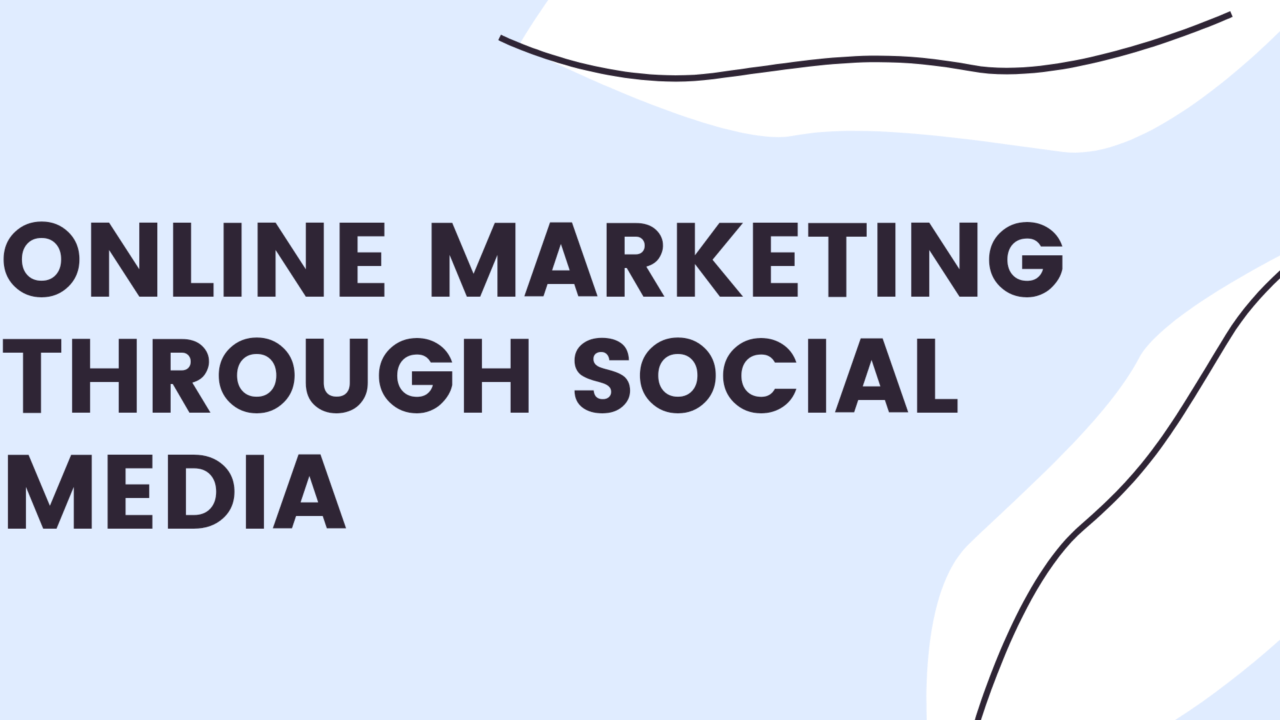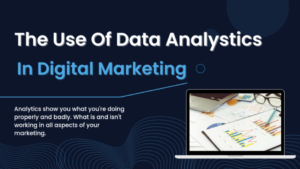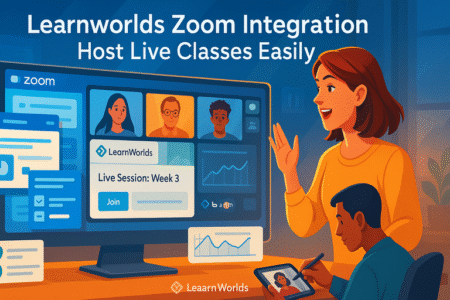Table of Contents
Online marketing through social media has become a crucial aspect of digital marketing strategies. Leveraging social media platforms effectively can lead to increased brand visibility, customer engagement, and sales.
This guide explores the best techniques for optimizing your online marketing efforts through social media.
Understanding Online Marketing Through Social Media
Online marketing through social media is essential for businesses looking to enhance their digital presence. Social media platforms provide a unique opportunity to engage directly with your audience, build brand loyalty, and drive traffic to your website. By leveraging these platforms effectively, you can reach a broader audience and create meaningful interactions that convert to sales.
Most importantly, understanding the nuances of each social media platform can significantly impact the success of your marketing efforts. Different platforms cater to different demographics and content types, so tailoring your strategy to each one is crucial. This section will delve into the key aspects of social media marketing and how to utilize them to your advantage.
The Importance of Social Media in Marketing
Social media has revolutionized the way businesses interact with their customers. It provides a direct line of communication, allowing brands to engage with their audience in real-time. This engagement is critical for building trust and credibility, which are essential components of any successful marketing strategy.
I recommend focusing on creating high-quality, engaging content that resonates with your target audience. Whether it’s through eye-catching visuals, informative articles, or entertaining videos, the goal is to capture your audience’s attention and encourage them to interact with your brand. Consistency is key, so ensure you maintain a regular posting schedule to keep your audience engaged.
Moreover, social media platforms offer robust advertising options that allow you to target specific demographics with precision. This means you can tailor your marketing campaigns to reach the people most likely to be interested in your products or services. Utilizing these tools effectively can significantly enhance your marketing efforts and lead to better results.
I would say another vital aspect of social media marketing is the ability to track and analyze your performance. By monitoring metrics such as engagement rates, follower growth, and website traffic, you can gain valuable insights into what’s working and what needs improvement. This data-driven approach allows you to refine your strategy and achieve better outcomes over time.
Key Social Media Platforms for Online Marketing
When it comes to online marketing through social media, not all platforms are created equal. Each has its strengths and unique user base, making it essential to choose the right ones for your business. The most popular platforms include Facebook, Instagram, Twitter, LinkedIn, and TikTok.
My suggestion is to start with Facebook, as it has the largest user base and offers comprehensive advertising tools. It’s ideal for businesses looking to reach a wide audience and engage with them through various content formats, including posts, videos, and live streams. Instagram, on the other hand, is perfect for visually-driven brands that can showcase their products through images and short videos.
LinkedIn is a must for B2B marketing. It allows you to connect with industry professionals, share insightful content, and establish your brand as a thought leader. Twitter is excellent for real-time engagement and sharing quick updates, while TikTok is rapidly growing as a platform for creative, short-form videos that can go viral quickly.
I believe focusing on the platforms where your target audience spends most of their time will yield the best results. By understanding the unique features and user base of each platform, you can tailor your content and strategy to maximize engagement and drive conversions.
How Social Media Algorithms Affect Marketing
Social media algorithms determine the visibility of your content on users’ feeds. These algorithms prioritize content based on various factors, such as engagement, relevance, and recency. Understanding how these algorithms work can help you optimize your posts to reach a broader audience.
I advise paying close attention to the type of content that performs well on each platform. For instance, Instagram favors visually appealing posts with high engagement, while Twitter prioritizes recent and relevant tweets. By creating content that aligns with these preferences, you can increase your chances of being seen by your target audience.
Additionally, engaging with your audience through comments, likes, and shares can boost your content’s visibility. Algorithms tend to favor posts that generate high interaction, so fostering a community around your brand is crucial. Encouraging user-generated content and participating in trending topics can also help improve your reach.
My recommendation is to stay updated with algorithm changes, as they can significantly impact your marketing strategy. Platforms frequently update their algorithms to enhance user experience, and being aware of these changes allows you to adapt your approach and maintain your content’s visibility.
Metrics to Track for Social Media Success
Tracking the right metrics is essential for evaluating the success of your social media marketing efforts. Key metrics include engagement rate, reach, impressions, follower growth, and conversion rate. Each of these provides valuable insights into different aspects of your performance.
I suggest starting with engagement rate, which measures the level of interaction your posts receive. High engagement indicates that your content resonates with your audience, while low engagement may signal the need for content adjustment. Reach and impressions are also crucial, as they show how many people see your posts and how often.
Conversion rate is another vital metric, as it directly relates to your business goals. It measures the percentage of social media interactions that lead to a desired action, such as making a purchase or signing up for a newsletter. Tracking this metric helps you understand the effectiveness of your marketing campaigns in driving actual results.
My advice is to use social media analytics tools to monitor these metrics regularly. These tools can provide detailed reports and insights, allowing you to make data-driven decisions and refine your strategy for better outcomes. By focusing on the metrics that matter most to your business, you can ensure your social media marketing efforts are on the right track.
Crafting a Winning Social Media Marketing Strategy
Crafting a winning social media marketing strategy is essential for businesses aiming to enhance their online presence. A well-defined strategy helps in setting clear goals, understanding your audience, creating engaging content, and maintaining a consistent posting schedule. By focusing on these elements, you can effectively utilize online marketing through social media to achieve your business objectives.
I recommend starting with a comprehensive analysis of your current social media performance. This will provide insights into what works and what doesn’t, allowing you to make informed decisions. Most importantly, a strategic approach will ensure that your efforts are aligned with your overall marketing goals, maximizing the impact of your social media activities.
Defining Your Social Media Marketing Goals
Defining your social media marketing goals is the first step in creating a successful strategy. These goals should be specific, measurable, achievable, relevant, and time-bound (SMART). Clear goals provide direction and help in evaluating the effectiveness of your social media efforts.
I advise setting goals that align with your business objectives. For example, if your aim is to increase brand awareness, you might set a goal to gain a certain number of followers within a specific timeframe. If driving traffic to your website is a priority, you could focus on increasing the number of clicks on your social media posts.
Moreover, it’s essential to break down these goals into smaller, manageable tasks. This approach makes it easier to track progress and make necessary adjustments. Regularly reviewing and adjusting your goals based on performance data will help you stay on track and achieve better results.
My suggestion is to use social media analytics tools to monitor your progress. These tools provide valuable insights into various metrics, such as engagement, reach, and conversions, enabling you to measure the success of your goals and refine your strategy accordingly.
Identifying Your Target Audience on Social Media
Identifying your target audience is crucial for effective social media marketing. Understanding who your audience is and what they are interested in helps you create content that resonates with them, leading to higher engagement and conversion rates.
I believe the first step is to conduct thorough market research. This includes analyzing demographic data, interests, behaviors, and preferences of your existing customers. Social media analytics tools can provide detailed insights into your audience’s characteristics and activities.
Once you have a clear picture of your target audience, you can segment them into different groups based on various criteria. This allows you to tailor your content and marketing messages to each segment, increasing the relevance and impact of your posts.
My advice is to create audience personas representing your ideal customers. These personas should include details such as age, gender, location, interests, and pain points. Using these personas as a reference can guide your content creation and marketing efforts, ensuring that you are effectively reaching and engaging your target audience.
Creating Engaging Content for Social Media
Creating engaging content is at the heart of any successful social media marketing strategy. Engaging content captures your audience’s attention, encourages interaction, and drives them to take action, such as sharing your posts or visiting your website.
I suggest focusing on quality over quantity. High-quality content that provides value to your audience is more likely to be shared and remembered. This includes informative articles, entertaining videos, eye-catching images, and compelling stories that resonate with your audience.
Furthermore, it’s important to vary your content types to keep your audience interested. Mix up your posts with different formats, such as blog posts, infographics, videos, polls, and live streams. This not only keeps your content fresh but also caters to different preferences within your audience.
I strongly believe that user-generated content can be a powerful tool for engagement. Encouraging your followers to share their experiences with your products or services and featuring their content on your profiles can create a sense of community and trust. This approach not only increases engagement but also leverages the authenticity of your customers’ voices.
Scheduling and Posting Strategies for Maximum Impact
Scheduling and posting strategies play a significant role in the effectiveness of your social media marketing. Consistent posting at optimal times ensures that your content reaches the maximum number of people, increasing your chances of engagement and conversions.
I recommend using social media scheduling tools to plan and automate your posts. These tools allow you to maintain a consistent posting schedule without having to manually post each time. Most importantly, they help you analyze the best times to post based on when your audience is most active.
In addition to scheduling, it’s crucial to engage with your audience in real-time. Responding to comments, messages, and mentions promptly shows that you value your followers and are attentive to their needs. This real-time engagement fosters a stronger connection with your audience and encourages them to interact more with your content.
My advice is to experiment with different posting frequencies and times to find what works best for your audience. Regularly reviewing your performance data will provide insights into the optimal posting strategies, allowing you to adjust and refine your approach for better results.
Leveraging Paid Advertising on Social Media Platforms
Leveraging paid advertising on social media platforms can significantly enhance your online marketing efforts. Paid ads allow you to target specific demographics with precision, ensuring that your content reaches the right audience at the right time. By incorporating paid social media advertising into your strategy, you can boost brand visibility, drive traffic, and increase conversions.
I recommend starting with a clear understanding of your advertising goals and budget. Most importantly, it’s essential to choose the right platforms and ad formats that align with your business objectives. This approach will help you maximize your return on investment (ROI) and achieve your marketing goals more efficiently.
Benefits of Paid Social Media Advertising
Paid social media advertising offers numerous benefits that can elevate your marketing efforts. One of the primary advantages is the ability to reach a highly targeted audience. Platforms like Facebook, Instagram, LinkedIn, and Twitter provide robust targeting options, allowing you to specify demographics, interests, behaviors, and even locations.
I believe another key benefit is the immediate visibility that paid ads provide. Unlike organic posts, which may take time to gain traction, paid ads can quickly appear in front of your target audience, leading to faster results. This can be particularly useful for time-sensitive promotions or product launches.
Moreover, paid social media advertising offers measurable results. You can track various metrics such as impressions, clicks, conversions, and engagement rates to evaluate the effectiveness of your campaigns. This data-driven approach enables you to make informed decisions and optimize your strategy for better performance.
My suggestion is to leverage the retargeting capabilities of social media platforms. Retargeting allows you to reach users who have previously interacted with your brand but haven’t converted. By showing them relevant ads, you can remind them of your products or services and encourage them to take action, ultimately increasing your conversion rates.
Types of Social Media Ads and When to Use Them
There are various types of social media ads, each suited for different objectives. Understanding the types of ads and when to use them is crucial for an effective advertising strategy. Common types include image ads, video ads, carousel ads, and sponsored posts.
I advise starting with image ads if you are looking to build brand awareness. These ads are simple yet effective in capturing attention with eye-catching visuals and concise messaging. For more engaging content, video ads can be highly impactful, especially on platforms like Instagram and Facebook, where video consumption is high.
Carousel ads are ideal for showcasing multiple products or features in a single ad. This format allows users to swipe through a series of images or videos, making it perfect for e-commerce businesses. Sponsored posts, on the other hand, blend seamlessly into users’ feeds, providing a more native advertising experience that can drive higher engagement.
My recommendation is to experiment with different ad formats to see which ones resonate best with your audience. Regularly analyzing the performance of each ad type will help you identify the most effective formats for your goals, allowing you to allocate your budget more strategically.
Budgeting for Social Media Advertising Campaigns
Effective budgeting is essential for the success of your social media advertising campaigns. Determining how much to spend and how to allocate your budget across different platforms and ad types requires careful planning and analysis.
I suggest starting by setting clear advertising objectives and estimating the costs associated with achieving them. This includes considering factors such as the average cost-per-click (CPC), cost-per-impression (CPM), and conversion rates for each platform. Allocating a portion of your budget to testing different ads can also help you optimize your spending.
Moreover, it’s important to continuously monitor and adjust your budget based on performance data. If certain ads or platforms are delivering better results, consider reallocating funds to maximize your ROI. Flexibility in your budget allows you to adapt to changing trends and audience behaviors.
I strongly believe that having a contingency budget is also crucial. This additional budget can be used for unexpected opportunities or to boost high-performing campaigns. By planning and managing your budget effectively, you can ensure that your social media advertising efforts are both efficient and impactful.
Measuring the ROI of Social Media Ads
Measuring the ROI of your social media ads is vital for understanding the effectiveness of your campaigns and making data-driven decisions. ROI helps you determine whether your advertising spend is generating a profitable return and where improvements can be made.
I recommend using a combination of metrics to measure ROI, including conversion rates, click-through rates (CTR), and engagement rates. These metrics provide insights into how well your ads are performing in terms of driving actions and interactions from your audience.
Additionally, it’s important to track the overall impact of your ads on your business goals. This includes analyzing metrics such as sales revenue, lead generation, and customer acquisition costs. By comparing these metrics to your advertising spend, you can calculate the ROI and identify areas for improvement.
My advice is to use social media analytics tools to gather and analyze data. These tools can provide detailed reports on various performance indicators, helping you understand the strengths and weaknesses of your campaigns. Regularly reviewing this data allows you to refine your strategy and achieve better results over time.
Building and Managing Your Social Media Community
Building and managing your social media community is crucial for fostering a loyal and engaged audience. A strong community can amplify your brand’s reach, provide valuable feedback, and drive organic growth. By nurturing relationships with your followers, you can create a positive and supportive environment that encourages interaction and loyalty.
I suggest starting by understanding the needs and interests of your community. Most importantly, being responsive and attentive to your audience’s concerns can significantly enhance their experience. This section will explore effective strategies for growing your social media following, engaging with your audience, handling negative feedback, and encouraging user-generated content.
Strategies for Growing Your Social Media Following
Growing your social media following is essential for increasing your brand’s visibility and influence. One effective strategy is to create high-quality, shareable content that resonates with your target audience. Consistent posting and leveraging trending topics can also help attract new followers.
I recommend collaborating with influencers and other brands to reach a broader audience. Influencers can introduce your brand to their followers, providing social proof and increasing your credibility. Additionally, running social media contests and giveaways can generate excitement and encourage people to follow and engage with your accounts.
Another strategy is to utilize social media ads to target specific demographics. Paid advertising can quickly increase your follower count by reaching users who are likely to be interested in your content. My suggestion is to use analytics to identify which types of content and ads perform best and to focus your efforts accordingly.
I strongly believe that engaging with your existing followers can also attract new ones. When your current audience is active and engaged, their interactions can appear in their followers’ feeds, drawing more attention to your brand. Encouraging your followers to share your content and tag friends can also help grow your community organically.
Engaging with Your Audience Effectively
Effective engagement with your audience is key to building a strong social media community. Responding to comments, messages, and mentions promptly shows that you value your followers and their input. This responsiveness can foster a sense of connection and loyalty.
I suggest creating interactive content, such as polls, Q&A sessions, and live videos. These formats encourage direct participation and make your audience feel involved. Most importantly, acknowledging and appreciating your followers’ contributions can make them feel valued and more likely to continue engaging with your brand.
Another important aspect is to listen to your audience’s feedback and make improvements based on their suggestions. This can help you better meet their needs and preferences, strengthening your relationship with them. Additionally, sharing user-generated content and giving shout-outs to loyal followers can boost engagement and create a sense of community.
My recommendation is to maintain a consistent and authentic voice across all interactions. Consistency helps build trust, while authenticity makes your brand relatable. By being genuine and approachable, you can create meaningful connections with your audience.
Handling Negative Feedback and Trolls
Handling negative feedback and trolls effectively is essential for maintaining a positive social media community. Negative comments can provide valuable insights, but they need to be managed carefully to prevent damage to your brand’s reputation.
I advise addressing legitimate concerns and complaints promptly and professionally. Apologize if necessary, and offer solutions to resolve the issue. Most importantly, remain calm and avoid getting defensive, as this can escalate the situation and reflect poorly on your brand.
For dealing with trolls, it’s often best to avoid engaging with them directly. Trolls thrive on provoking reactions, so ignoring their comments can deprive them of the attention they seek. If the trolling becomes persistent or harmful, consider blocking or reporting the user.
My suggestion is to establish clear community guidelines that outline acceptable behavior on your social media platforms. Enforcing these guidelines consistently can help create a respectful and supportive environment. Encourage your community to report any abusive behavior, and take appropriate action to address it.
I strongly believe that transparency is crucial when handling negative feedback. Being open about mistakes and showing a commitment to improvement can build trust and demonstrate that you value your audience’s input. This approach can turn a potentially negative situation into an opportunity for growth and positive engagement.
Encouraging User-Generated Content
Encouraging user-generated content (UGC) is an excellent way to engage your community and build trust. UGC includes any content created by your followers that showcases your brand, such as reviews, testimonials, and photos.
I recommend running campaigns that invite your followers to share their experiences with your products or services. This can include branded hashtags, challenges, and contests. Most importantly, featuring UGC on your social media profiles can make your followers feel valued and recognized.
Another effective strategy is to create a specific hashtag for your brand and encourage your audience to use it. This makes it easier to find and share UGC, and it helps build a sense of community around your brand. Additionally, sharing UGC can provide authentic and relatable content that resonates with your audience.
My advice is to engage with users who create content for your brand by liking, commenting, and sharing their posts. This interaction shows appreciation and can motivate others to contribute as well. Highlighting UGC in your marketing materials, such as your website or advertisements, can also increase its impact.
I suggest hosting events or campaigns that encourage your followers to generate content. This could be anything from a photo contest to a creative challenge related to your products. By fostering a sense of participation and community, you can strengthen your relationship with your audience and create a wealth of valuable content.
Analyzing and Improving Your Social Media Marketing Efforts
Analyzing and improving your social media marketing efforts is crucial for achieving long-term success. By regularly evaluating your performance, you can identify strengths and weaknesses in your strategy and make necessary adjustments. This ongoing process helps ensure that your social media activities are aligned with your business goals and delivering the desired results.
I recommend setting up a consistent schedule for reviewing your social media metrics. Most importantly, focus on key performance indicators (KPIs) that directly relate to your objectives, such as engagement rates, reach, conversions, and follower growth. This approach will provide you with a clear picture of your progress and areas that need improvement.
Tools for Monitoring Social Media Performance
Monitoring your social media performance is essential for understanding how well your content is resonating with your audience. Various tools can help you track and analyze your performance, providing valuable insights into your social media activities.
I suggest starting with native analytics tools provided by social media platforms, such as Facebook Insights, Instagram Insights, and Twitter Analytics. These tools offer detailed data on your posts, audience demographics, and engagement metrics. Most importantly, they are free and easy to use, making them accessible for businesses of all sizes.
Another useful tool is Google Analytics, which can track traffic from social media to your website. This helps you understand how social media efforts are driving traffic and conversions. I believe using third-party tools like Hootsuite, Sprout Social, and Buffer can also be beneficial, as they provide comprehensive reports and allow you to manage multiple social media accounts from a single dashboard.
My recommendation is to experiment with different tools and find the ones that best meet your needs. Regularly reviewing the data from these tools will help you make informed decisions and optimize your social media strategy for better results.
Conducting a Social Media Audit
Conducting a social media audit involves evaluating your current social media presence to identify areas for improvement. This process includes reviewing your profiles, content, and performance metrics to ensure that your social media efforts are effective and aligned with your goals.
I advise starting with a thorough review of your social media profiles. Ensure that all information is accurate and up-to-date, including profile pictures, bios, and contact information. Most importantly, check for consistency across all platforms to maintain a cohesive brand image.
Next, analyze your content to see which types of posts perform best. Look at metrics such as engagement rates, shares, and comments to identify patterns. My suggestion is to focus on creating more of the content that resonates with your audience and less of what doesn’t. This will help you refine your content strategy and improve overall performance.
I recommend also reviewing your competitors’ social media activities. This can provide insights into industry trends and highlight opportunities for differentiation. By understanding what works for your competitors, you can apply similar tactics to your strategy while adding your unique touch.
Finally, summarize your findings and create an action plan based on the audit. This plan should outline specific steps to address any issues and capitalize on opportunities. Regularly conducting social media audits will ensure that your strategy remains effective and up-to-date.
Adjusting Your Strategy Based on Data Insights
Adjusting your social media strategy based on data insights is crucial for continuous improvement. By analyzing your performance data, you can make informed decisions to enhance your strategy and achieve better results.
I strongly believe that focusing on key metrics like engagement, reach, and conversions will provide the most valuable insights. Identify trends and patterns in your data to understand what is working and what isn’t. For example, if certain types of posts consistently receive high engagement, consider creating more content in that style.
Additionally, it’s important to experiment with different strategies and tactics. Testing new content formats, posting times, and ad campaigns can help you discover what resonates best with your audience. My advice is to use A/B testing to compare the performance of different approaches and refine your strategy accordingly.
I suggest setting up regular review sessions to evaluate your progress and make necessary adjustments. This iterative process will help you stay agile and responsive to changes in your audience’s preferences and behavior. By continually optimizing your strategy based on data insights, you can ensure sustained success in your social media marketing efforts.
Staying Up-to-Date with Social Media Trends
Staying up-to-date with social media trends is essential for maintaining a competitive edge. Social media platforms are constantly evolving, and keeping abreast of the latest trends will help you adapt your strategy and stay relevant.
I recommend following industry blogs, news sites, and influencers to stay informed about new features, algorithm changes, and emerging trends. Most importantly, participating in webinars, conferences, and online courses can provide valuable insights and networking opportunities.
Additionally, it’s important to experiment with new trends to see how they resonate with your audience. For example, if video content is gaining popularity, consider incorporating more videos into your content strategy. I believe that being an early adopter of new trends can give you a competitive advantage and help you stand out in a crowded market.
My suggestion is to encourage a culture of continuous learning within your team. Regularly sharing insights and best practices can help everyone stay informed and aligned with the latest developments. By staying up-to-date with social media trends, you can ensure that your strategy remains fresh, engaging, and effective.






